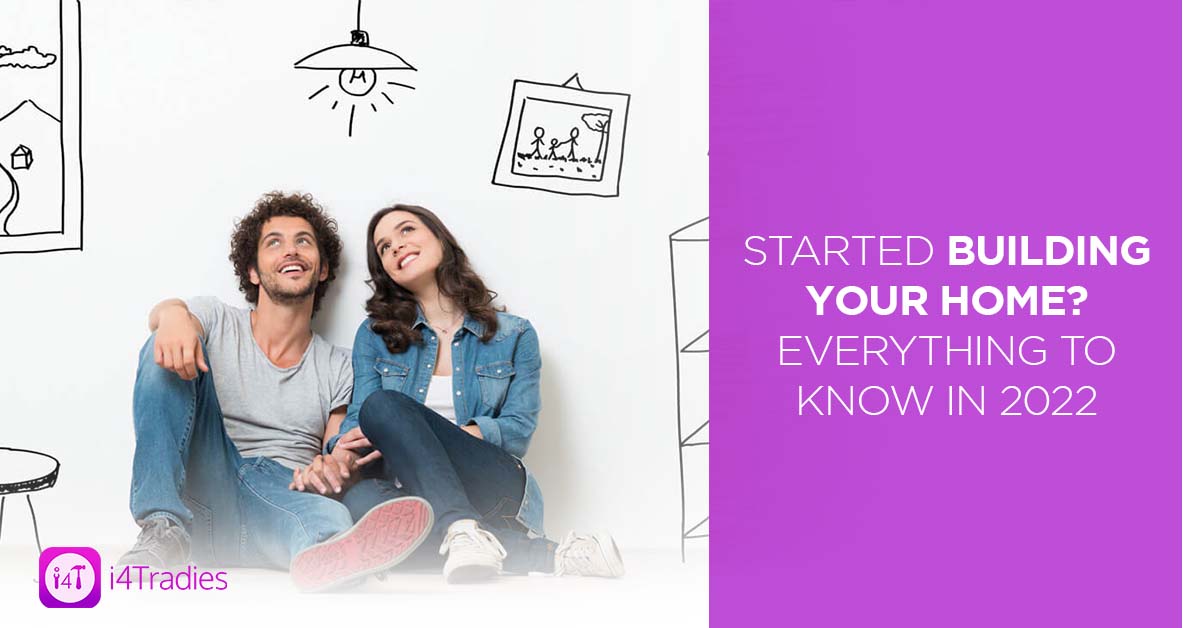Is it cheaper to buy or build a house in Australia?
How often have you Googled “new houses for sale near me” when deep inside you are aching to building your home?
There are many different things to consider when deciding whether to buy or build a house and cost is one of them.
So if you are wondering how much does it cost to build a home in Australia, here’s your answer:
The cost of building a home depends on two main factors which are:
- Median lot price and stamp duty in each state.
- Total build cost in each state
| City | Total build cost | Median housing value + stamp duty | Which is cheaper? |
| Sydney | $867,864 | $925,761 | Build |
| Melbourne | $764,493 | $734,423 | Buy |
| Brisbane | $753,594 | $518,584 | Buy |
| Adelaide | $502,353 | $461,972 | Buy |
| Perth | $554,935 | $464,108 | Buy |
| ACT | $844,594 | $644,445 | Buy |
| National average | $714,489 | $624,882 | Buy |
Source: CoreLogic, 2020.
According to the national average this suggests that it could be $90,000 cheaper to buy than it is to build. Note that the data only shows figures based on cost of building in capital cities. These costs may vary when building in suburbs.
While it can be costly to build your home vs buying one, there are many advantages that you cannot overlook.
These include:
- Personalisation at every step from the location and size of your choice to all the features and home designs you want to add to build your dream home.
- First Home Owners Grant to help you cut those costs a bit.
- Concession on stamp duty charges which you can avail.
- Ability to add energy efficient options to your home further brings down the cost in the long run.
What are stages, basic steps of new home construction?
Building your dream home can be a roller coaster ride filled with breathtaking highs and a few painful lows. Yet it’s an experience of a lifetime.
In order to make the building process stress-free and to get everything right the first time around, it’s important that you familiarise yourself with some basic steps involved in a new home build.
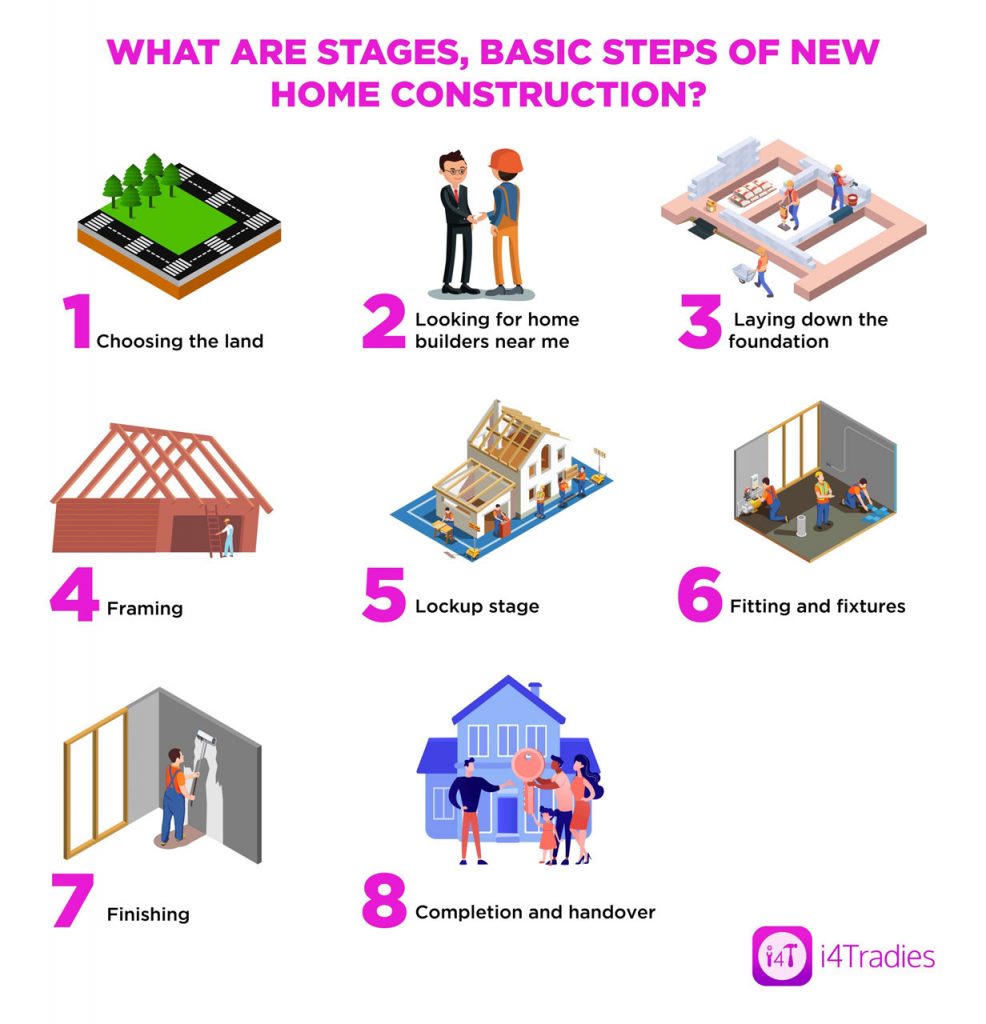
Step 1: Choosing the land: Buying land is the first step you take when initiating a new home build. Things to look for when buying land include the square footage, the location and the land itself (flat or sloped).
Step 2: Looking for home builders near me: You can look for a builder and work backwards letting them help you with choosing the land and building on it as per your requirement. Or, you can buy the land and work with your builder to design and build making the best use of the space.
Step 3: Laying down the foundation: Your builder will carry out all the earthwork including levelling the land, pouring in concrete, underground electrical and plumbing work, meshing, protection from termites and the like.
Step 4: Framing: The frame or skeleton of the house along with the structural supports includes everything from electrical, plumbing, guttering, roofing, insulation and more.
Step 5: Lockup stage: At this stage your home will not just have walls serving as the boundary but also windows and doors will be installed allowing you to lock up the home.
Step 6: Fitting and fixtures: You have now finally arrived at the stage where plumbers, electricians, carpenters, cabinet makers, tilers etc., can start working to power outlets, cabinets, flooring and the like.
Step 7: Finishing: This is the last stage of your new home build project. At this stage your builder will add the final touches to your home including paintwork, HVAC systems, lightings, bathroom fixtures finishes etc.
Step 8: Completion and handover: The builder or builders you are working with will now run a final inspection of the house and walk you through the finished home. Give attention to detail and check whether all is done as per your requirement. Finally, now is the time when you will make your final payment and get the keys.
What are the new construction techniques?
As technology take leaps, so do the construction techniques. Updates in new materials and methods of carrying out certain tasks have certainly enhanced productivity as well as cost-savings on the sites.
Some of these techniques include:
Eco-friendly materials and techniques:
More and more sustainable buildings are now being created thanks to the advancement in materials which are now environment friendly. Fire resistant steel frames, recycled copper and concrete and metal/glass parapets are some of the eco-friendly materials being used now a days.
In addition, construction sites are also following the National Construction Code thereby using energy more efficiently to reduce the impact on the environment.
Prefabricated construction:
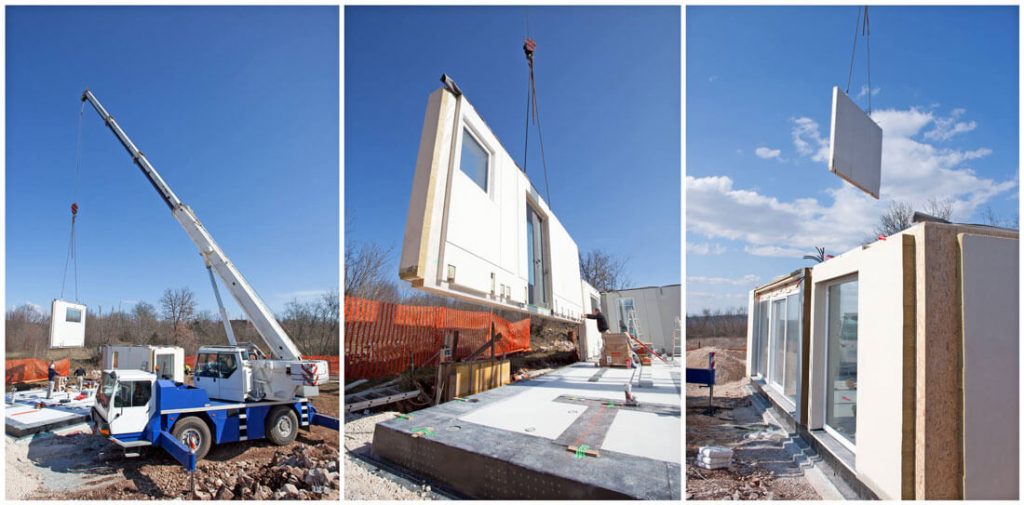
Mass production of bathrooms and other structures off-site and then delivered and installed on site is resulting in better energy savings and quality, quicker turnaround, lower impact on residents etc.
A similar technique is permanent modular construction that prefabricates parts of the building and then assembles them on-site.
Estimating and construction software: Calculating quality and price of materials using technology prevents waste thus saving time and money. On the other hand, construction software helps builders with everything from accounting to labour management, carrying out productivity and cost analysis and overseeing every single operation more precisely.
Which building construction method is the safest?
There are 2 main building construction methods which are:
- Double Brick
- Structural timber frame
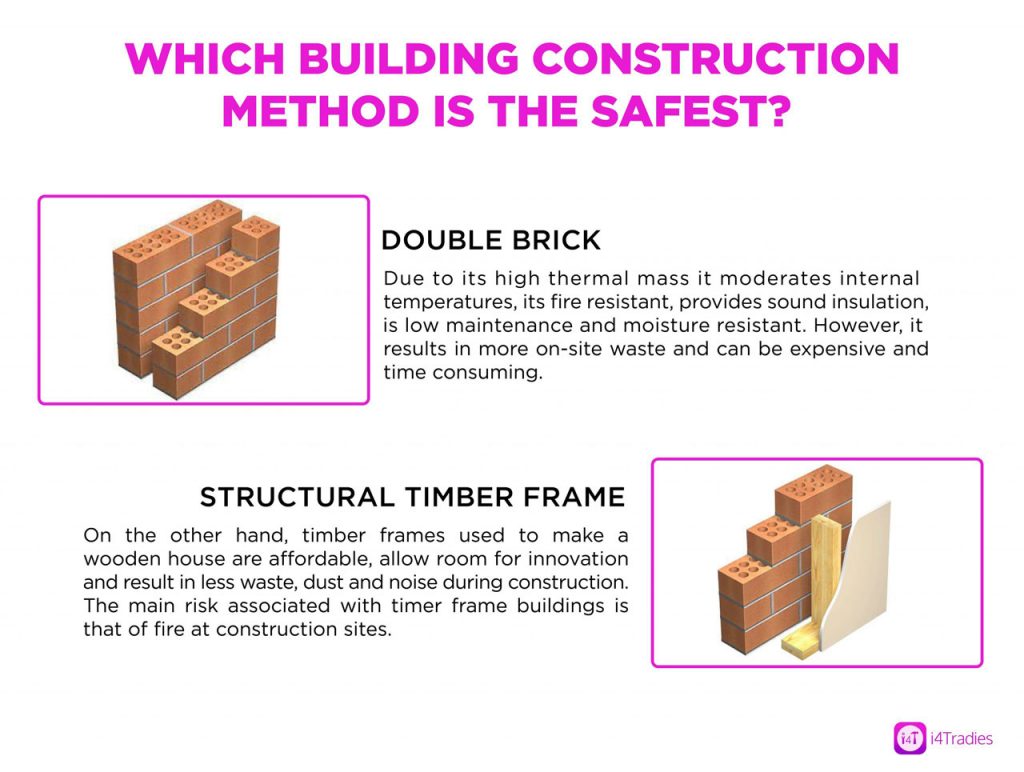
Double Brick: Due to its high thermal mass it moderates internal temperatures, its fire resistant, provides sound insulation, is low maintenance and moisture resistant. However, it results in more on-site waste and can be expensive and time consuming.
Structural Timber Frame: On the other hand, timber frames used to make a wooden house are affordable, allow room for innovation and result in less waste, dust and noise during construction. The main risk associated with timer frame buildings is that of fire at construction sites.
By comparison, double brick is thus a safer construction method as compared to timber frame construction.
How much would it cost to build a steel house?
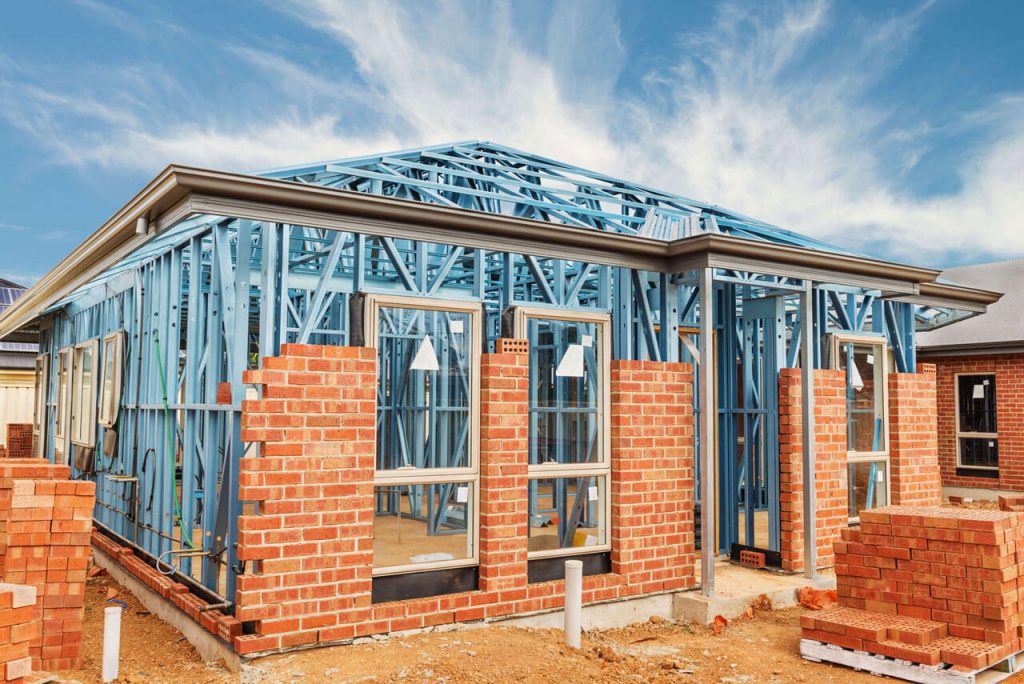
When building a house, you will come across two main options of framing to choose from; timber frames and steel frames.
While timber, being cost-effective for a wood house, is the choice of 80% of homes in Australia, Steel frames are becoming increasingly popular in the past few years.
The difference in prices between timber frames and steel frames is a lot since steel frames are labour and energy intensive.
While an average timber frame costs between $1300 – $1500 per square foot, steel frames can cost you anywhere between $5000 – $20,000.
How to estimate building construction costs?
The bigger the house the more labour hours and materials will be required to build it.
Building costs are calculated by multiplying the total floor area (m2) by the cost estimate ($ per m2) provided by your builder.
These cost estimates are based on type and quality of building material used, building site constraints and labour costs.
How to build a residential building in my own land?
As an owner builder, when you decide to build a home on your own land or supervise one, you should be aware of your duties. Before you begin you would be required to get permission from relevant local authorities as regulations vary from state to state.
You would also be required to organise all trade related tasks and oversee the construction of your residential building from laying down the foundation till completion on your own.
How to select a builder for our house construction?
Choosing the right builder for your home is the most important step for your new home build. After all, your builder is the person you are entrusting every minute detail with.
Here is quick checklist for you to go through when selecting a builder:
- Ensure the name of your builder is associated with a current registration.
- Check endorsements for work that you need them to undertake.
- Make sure your builder holds a valid licence to carry out the work.
- Check if your builder is a member of the Master Builders Association for further credibility.
- Select from 3 to 4 builders to provide you quotes on your house construction.
- Make sure you are comparing apples with apples since prices can vary with materials used and other factors.
- Get a credit reference to check their financial stability.
- Select the type of builder that is specialised in house designs and preferences you are after.
- Homes are not built overnight, so look for the personality of your builder to help you build a relationship that lasts during the house construction period and beyond.
What is the most expensive part in construction?
To help you get an idea of how much it would cost you at each stage of building your dream home, it helps to break down the costs in terms of work being done.
Some of the top expenses you need to set money aside for include:
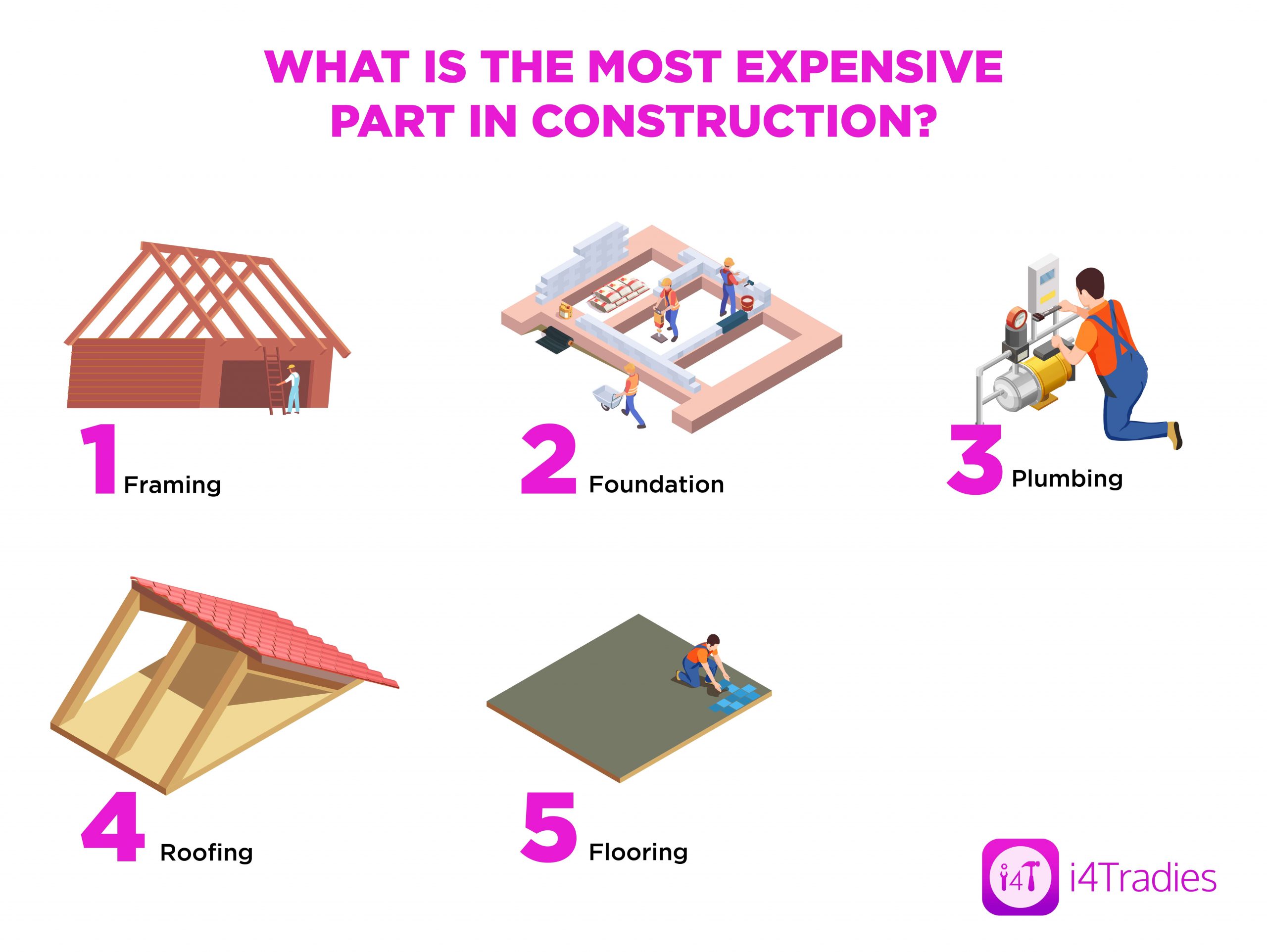
- Framing: This is the most expensive part in the construction process. The bigger the house, the more expensive it will cost you to frame it as well. The cost of framing also depends upon the type of framing, material and labour costs.
- Foundation: This is the second biggest expense you will incur and its price is determined based on location of the home and the type of foundation.
- Plumbing: Plumbing is highly skilled work and hence is the third most expensive part in construction of a new home. Factors such as number of storeys, excavation work and material used tend to affect the overall cost.
- Roofing: The size and type of roof determines its cost and is the fourth biggest expense you will come across.
- Flooring: Finally, the flooring mainly determined by the size of the house and the material you go for, adds up to the cost of this fifth biggest expense.
Wrapping up
Transitioning from being a renter to a first time home owner is a huge leap. Deciding whether to become a home buyer or build one is personal choice and is based on several other factors as discussed.
Nonetheless, if you go for building your own home, you’ll soon discover that it’s an incredibly life changing experience.
A thorough understanding of all the steps and careful planning is the key.

